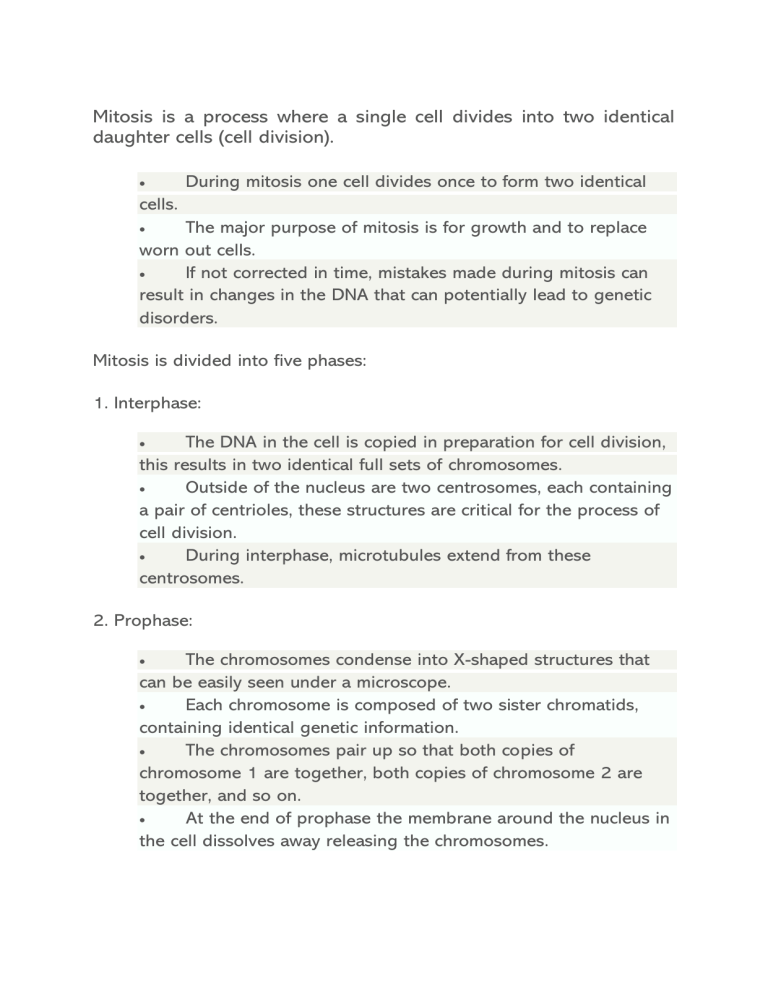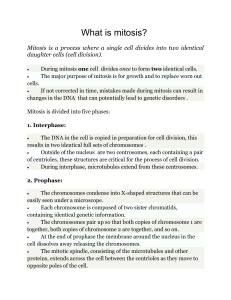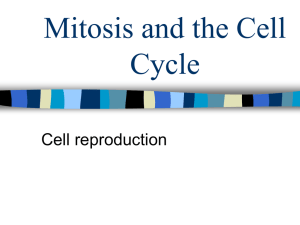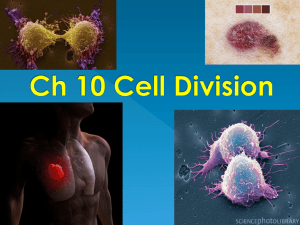
Mitosis is a process where a single cell divides into two identical daughter cells (cell division). • During mitosis one cell divides once to form two identical cells. The major purpose of mitosis is for growth and to replace worn out cells. • If not corrected in time, mistakes made during mitosis can result in changes in the DNA that can potentially lead to genetic disorders. • Mitosis is divided into five phases: 1. Interphase: The DNA in the cell is copied in preparation for cell division, this results in two identical full sets of chromosomes. • Outside of the nucleus are two centrosomes, each containing a pair of centrioles, these structures are critical for the process of cell division. • During interphase, microtubules extend from these centrosomes. • 2. Prophase: The chromosomes condense into X-shaped structures that can be easily seen under a microscope. • Each chromosome is composed of two sister chromatids, containing identical genetic information. • The chromosomes pair up so that both copies of chromosome 1 are together, both copies of chromosome 2 are together, and so on. • At the end of prophase the membrane around the nucleus in the cell dissolves away releasing the chromosomes. • The mitotic spindle, consisting of the microtubules and other proteins, extends across the cell between the centrioles as they move to opposite poles of the cell. • 3. Metaphase: The chromosomes line up neatly end-to-end along the centre (equator) of the cell. • The centrioles are now at opposite poles of the cell with the mitotic spindle fibres extending from them. • The mitotic spindle fibres attach to each of the sister chromatids. • 4. Anaphase: The sister chromatids are then pulled apart by the mitotic spindle which pulls one chromatid to one pole and the other chromatid to the opposite pole. • 5. Telophase: At each pole of the cell a full set of chromosomes gather together. • A membrane forms around each set of chromosomes to create two new nuclei. • The single cell then pinches in the middle to form two separate daughter cells each containing a full set of chromosomes within a nucleus. This process is known as cytokinesis. •






